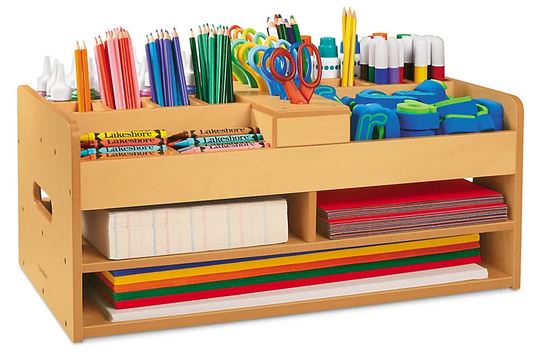21 Categories Defined by Shared Activities or Goals
A final type of category structure creates categories for resources that are used together or that have a shared purpose. These are often called activity-based categories. This task-oriented approach to organizing is sometimes called a TASKONOMY to contrast it with a TAXONOMY, which groups things according to their shared properties.
For example, if you do a lot of art projects, it would be very efficient to keep your supplies together:

You can see that many of the resources that have been organized in this “art project box” have some similar visual properties. The paper resources are flat, which enables them to be stacked, the pencils and markers are thin and “pointy,” and because the scissors have sharp ends they are arranged with the sharp ends put out of the way. But while these common properties are used to arrange these different types of resources in the art project box, the reason they go together is because they are used for the same kinds of activities.

